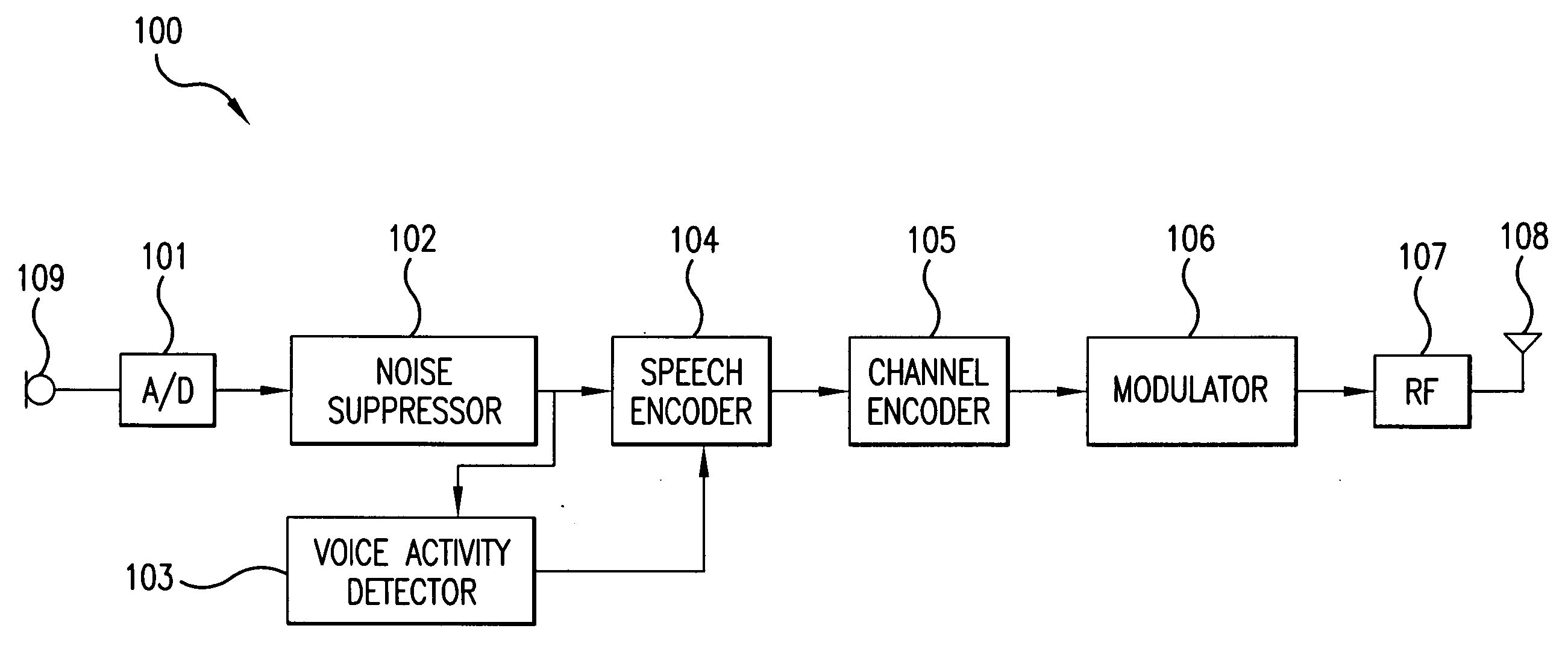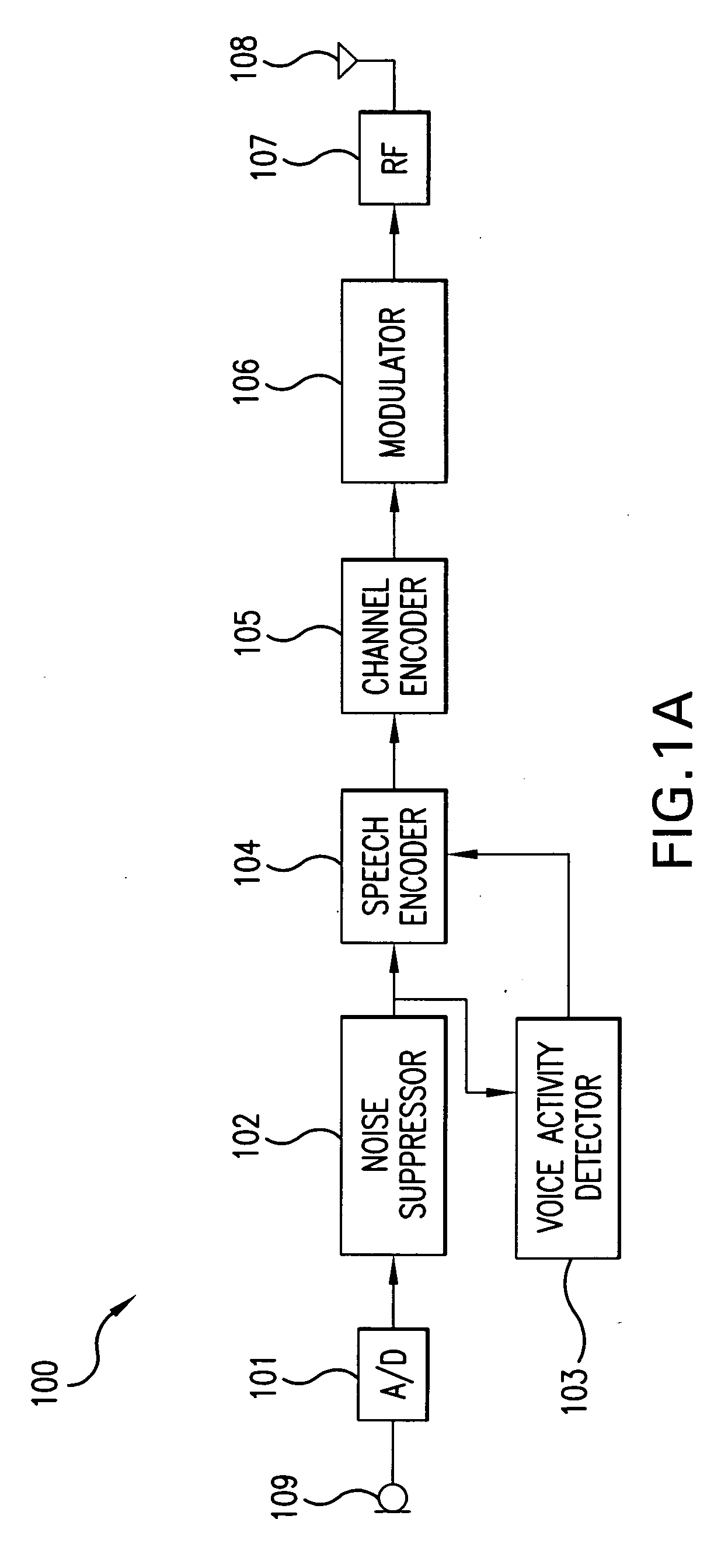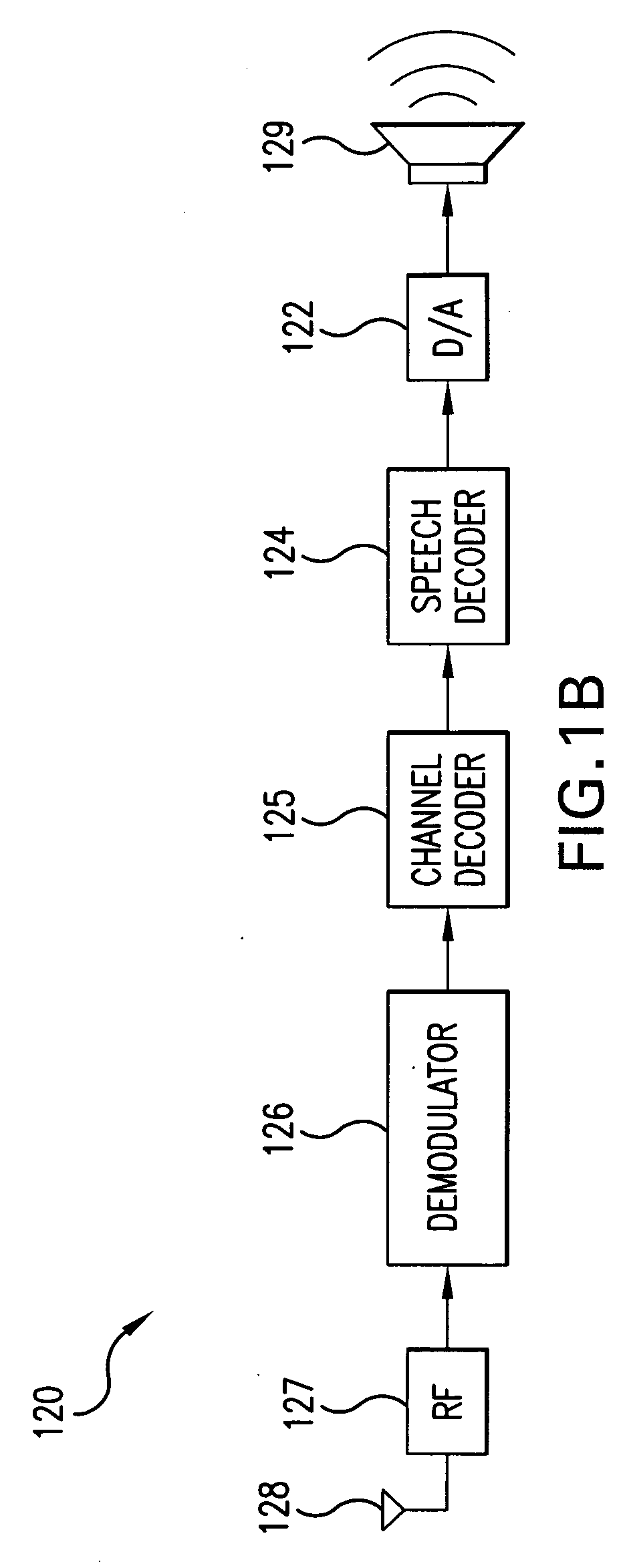Channel decoding for wireless telephones with multiple microphones and multiple description transmission
a wireless telephone and channel decoding technology, applied in the field of wireless telephones, can solve the problems of inability to distinguish the voice component from the background noise component, the inability of the far-end user to decipher the desired voice component against the din of the embedded background noise component, and the inability to decipher the desired voice component. the effect of improving channel decoding and combating transmission channel impairmen
- Summary
- Abstract
- Description
- Claims
- Application Information
AI Technical Summary
Benefits of technology
Problems solved by technology
Method used
Image
Examples
first embodiment
[0151] In the present invention, decoder 2670 is further configured to perform two functions: (i) time-align the signals received by receiver module 2660, and (ii) combine the time-aligned signals to produce the output signal. As is apparent from FIG. 21, due to the spatial separation of the microphones in a microphone array, a sound wave emanating from the mouth of a user may impinge upon each microphone in the array at different times. For example, with reference to FIG. 21, parallel wave fronts 2110 will impinge upon the left-most microphone of microphone array 2100 before it impinges upon the microphone separated by a distance d from the left-most microphone. Since there can be a time-delay with respect to when the sound waves impinge upon the respective microphones in microphone array 2610, there will be a corresponding time-delay with respect to the audio signals output by the respective microphones. Decoder 2670 of second wireless telephone 2520 can compensate for this time-d...
second embodiment
[0154] In the present invention, decoder 2670 of second wireless telephone 2520 is configured to perform the following functions. First, decoder 2670 is configured to detect a direction of arrival (DOA) of a sound wave emanating from the mouth of a user of first wireless telephone 2510 based on transmitted signals 2550 received by receiver module 2660 of second wireless telephone 2520. Decoder 2670 can determine the DOA of the sound wave in a similar manner to that described above with reference to FIGS. 21 through 24.
[0155] Second, decoder 2670, which as mentioned above may optionally include a DSP, is configured to adaptively combine the received signals based on the DOA to produce the output signal. By adaptively combining the received signals based on the DOA, decoder 2670 of second wireless telephone 2520 can effectively steer a maximum sensitivity angle of microphone array 2610 of first wireless telephone 2510 so that the mouth of the user of first wireless telephone 2510 is w...
third embodiment
[0156] In the present invention, for each voice frame of the signals received by receiver module 2660, decoder 2670 of second wireless telephone 2520 is configured to perform the following functions. First, decoder 2670 is configured to estimate channel impairments (e.g., bit errors and frame loss). That is, decoder 2670 is configured to determine the degree of channel impairments for each voice frame of the received signals. For example, for a given frame, decoder 2670 can estimate whether the channel impairments exceed a threshold. The estimate can be based on signal-to-noise ratio (S / N) or carrier-to-interference ratio (C / I) of a channel, the bit error rate, block error rate, frame error rate, and or the like. Second, decoder 2670 is configured to decode a received signal with the least channel impairments, thereby producing the output signal for the respective voice frames.
[0157] By adaptively decoding the signal with the least channel impairments for the respective voice frames...
PUM
 Login to View More
Login to View More Abstract
Description
Claims
Application Information
 Login to View More
Login to View More - R&D
- Intellectual Property
- Life Sciences
- Materials
- Tech Scout
- Unparalleled Data Quality
- Higher Quality Content
- 60% Fewer Hallucinations
Browse by: Latest US Patents, China's latest patents, Technical Efficacy Thesaurus, Application Domain, Technology Topic, Popular Technical Reports.
© 2025 PatSnap. All rights reserved.Legal|Privacy policy|Modern Slavery Act Transparency Statement|Sitemap|About US| Contact US: help@patsnap.com



